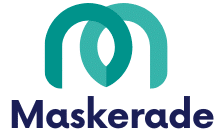What Are the Latest Developments in Smart Contact Lenses for Vision Impairment?

The world of contact lenses is becoming more advanced and innovative than ever before. Thanks to the pioneering efforts of scientists and researchers, the concept of ‘smart’ contact lenses is rapidly becoming a reality. This revolutionary eye technology goes beyond just correcting vision—it has the potential to significantly improve health monitoring and disease detection. With keywords like lenses, smart, vision, and technology, the ever-evolving field of smart contact lenses has captured the attention of both the healthcare and tech industries. In this article, we will delve into some of the latest developments in this fascinating area of research and innovation.
The Concept and Potential of Smart Lenses
Contact lenses have been around for years, helping individuals with impaired vision to see clearly. However, the emergence of smart lenses has the potential to redefine the purpose and utility of these tiny devices. Smart lenses come embedded with an array of sensors and microelectronics, enabling them to perform various tasks, from enhancing vision to monitoring health parameters.
Cela peut vous intéresser : Ideal rental: St Barts boat rental for the perfect getaway
Imagine having lenses that adjust their focus in real-time according to the object you’re looking at, or lenses that continuously monitor your glucose levels if you’re a diabetic patient. The concept of smart lenses is based on integrating advanced technology with a simple object that millions of people around the world use daily.
Breakthroughs in Health Monitoring
One of the exciting potentials of smart lenses lies in health monitoring. With the development of sensors small enough to be embedded into contact lenses, it’s now possible to track certain health indicators. For instance, researchers at Purdue University have recently made progress in creating a contact lens capable of monitoring intraocular pressure (IOP) – a critical parameter for diagnosing and managing glaucoma.
A voir aussi : How Can Interactive E-books Improve Reading Comprehension for UK’s Primary Students?
Glaucoma, a leading cause of blindness, is characterized by an increase in IOP. Regular monitoring is crucial, but current methods can be invasive or inconvenient. This is where the Purdue University contact lens comes into play. The lens includes a sensor capable of detecting pressure changes within the eye and transmitting the data to a receiver. This could allow for continuous, non-invasive monitoring of IOP, revolutionizing the detection and management of glaucoma.
Another significant development in the field is the creation of a contact lens capable of monitoring glucose levels. This is particularly useful for diabetic patients, as it offers a non-invasive alternative to regular blood sugar tests.
The Evolution of Vision Enhancement
Smart lenses aren’t just about health monitoring. They are also being developed to enhance vision in innovative ways. One example of this is a contact lens that adjusts its focus in real-time, based on where the wearer is looking. This could be hugely beneficial for people with presbyopia, a common age-related condition that affects the eye’s ability to focus on close-up objects.
This type of lens uses an eye-tracking system to determine the wearer’s gaze direction and adjust the lens focus accordingly. Not only does this lead to improved vision, but it also offers a more natural viewing experience, as the lens mimics the eye’s natural focusing mechanism.
Market Perspectives for Smart Contact Lenses
The market for smart contact lenses is poised for significant growth. According to data from market research companies, the global smart contact lenses market will reach billions of dollars by the end of the decade. This growth is driven by an aging population, increasing prevalence of vision impairment, and the growing demand for non-invasive health monitoring solutions.
The rise of the internet of things (IoT) and advancements in miniaturized electronics are also contributing to the expansion of this market. Numerous tech companies and startups, alongside established players in the eye care industry, are investing heavily in the research and development of smart lenses.
Challenges and Future Directions
While the potential of smart lenses is undeniable, there are several challenges to overcome. One of the significant concerns is the safety and comfort of these lenses. Since they will be worn directly on the eye, any malfunction or discomfort could potentially harm the wearer’s vision. Therefore, extensive testing and regulatory approvals are required before these lenses can reach the general population.
Another challenge is ensuring the privacy and security of the data collected by the lenses. As with any IoT device, smart lenses will be collecting sensitive health data. This must be appropriately protected to prevent potential misuse.
Despite these challenges, the future of smart contact lenses is bright. As technology continues to advance, we can expect to see more exciting developments in this field, transforming the way we think about contact lenses and vision health.
Advancements in Augmented Reality and Drug Delivery
Another fascinating area in the application of smart contact lenses is in the field of augmented reality (AR). A prominent name in this domain, Mojo Vision, has been developing a contact lens which can provide an AR interface. This innovative smart lens technology overlays digital information onto the real world, allowing wearers to see text messages, navigation directions, or even weather updates directly in their field of vision.
Such AR applications have vast potential beyond just convenience. They can also be life-changing for those with low vision. By enhancing contrast or outlining objects, AR contact lenses can help visually impaired wearers navigate their surroundings more efficiently.
In addition, smart lenses can be further developed for drug delivery, especially for ocular conditions. Researchers are striving to create a lens that can deliver medication directly to the eye over an extended period. This application might be a game-changer for conditions such as glaucoma or dry eye syndrome where consistent drug delivery is crucial.
Though more research and testing are required, the potential of AR and drug delivery through smart lenses could significantly influence how we interact with technology and treat ocular disease.
From Concept to Clinical Application: Azalea Vision and Others
Several companies are already making remarkable strides in turning the concept of smart lenses into reality. For instance, Azalea Vision, a startup specializing in smart lens technology, has been making waves with its innovative approach to combating vision impairment.
Azalea Vision is currently developing a smart contact lens designed to improve the vision of those with macular degeneration, a condition that results in blurring or loss of central vision. Their smart lens design aims to magnify specific parts of the visual field, thereby improving the wearer’s overall vision.
Moreover, companies like Google’s Verily and Novartis are also venturing into the smart lens arena. Their joint project aims to develop a contact lens that can continuously monitor the wearer’s glucose levels, offering a non-invasive way of managing diabetes.
Conclusion
The field of smart contact lenses is brimming with potential, promising to revolutionize vision care and health monitoring. As science and technology continue to intermingle, we’re witnessing the evolution of an industry, where a simple object like a contact lens can become an advanced tool for managing health conditions in real time.
While challenges like safety, comfort, and data security need to be addressed, the advancements made so far are a testament to human ingenuity and the relentless pursuit of improving life quality. From monitoring intraocular pressure to overlaying an augmented reality, from enhancing vision to delivering drugs, smart lenses are on their way to becoming a significant element in healthcare and technology.
As we move forward, it’s essential to stay informed and excited about these developments, as they are set to shape the future of vision care. From startups like Azalea Vision to tech giants like Google, numerous companies are investing in this technology, ensuring that the future of smart contact lenses is not only bright but within sight.
